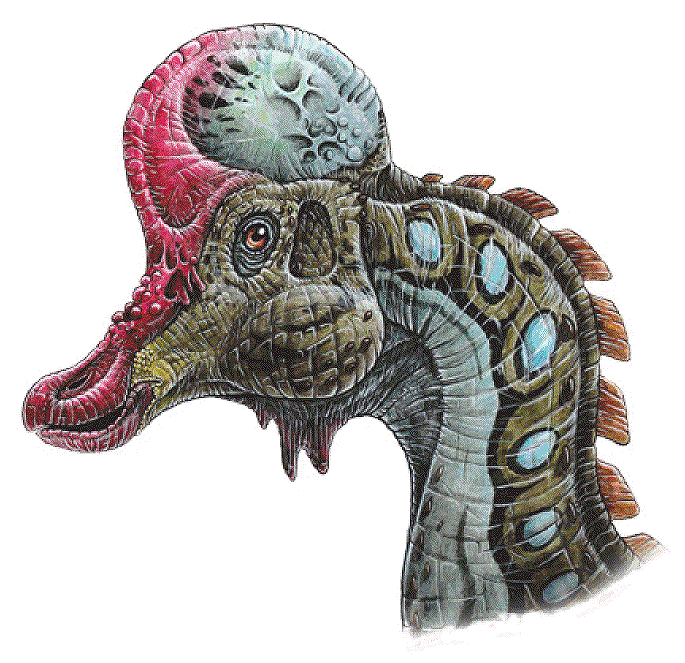|
Corythosaurus casuarius
(Brown, 1914) |
|
 |
|
Name Means: |
"Corinthian Lizard" |
Length: |
33 feet (10 m) |
|
Pronounced: |
kore-Ith-oh -Saw-rus |
Weight: |
3.5 tons (3,200 kilos) |
|
When it lived: |
Late Cretaceous - 75 MYA |
|
|
|
Where found: |
Alberta, Canada; Montana, USA |
|
|
|
Corythosaurus is a member of the planting-eating,
duck-billed dinosaur family that is sometimes referred to as
hadrosaurs. It had a toothless, wide beak and hundreds of teeth in the
back part of its mouth that it used for grinding tough plants to mush.
Like other duckbills, it was a herd animal that traveled in large
groups. Fossils of this dinosaur are sometimes found together with
other plant-eating dinosaurs, which leads scientists to believe that
different types of plant-eaters grouped together to feed, drink and
maybe even migrate (moving from one area to another).
Corythosaurus is most famous for its helmet or half dinner
plate-like crest. It is known from remains belonging to at least
twenty individuals. The crest is similar to the helmets worn by ancient
Corinthian warriors; this resulted in its name. The crest grew until adulthood and was likely
used as a mating ritual ornament. There appears to be gender
differentiation regarding the size of the crest, with males having a
larger crest. At least 10 skulls have been identified from this
species, giving scientists a good look at individual and gender
differentiation. Fossilized skin remains have also been found, further
contributing to the knowledge of Corythosaurus. |
|
|
|
|
|
|
|
|
|
|
Edugraphics.Net | Feenixx Publishing |
|
|
|
|